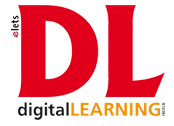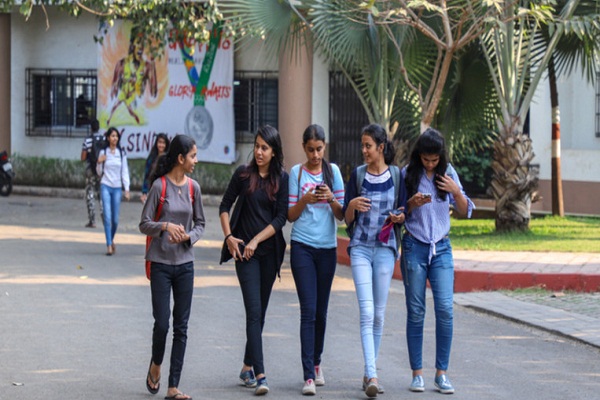Higher education in the engineering space needs to focus on industry-standard curriculums. Namrata Hazarika from the Elets News Network (ENN) writes on how engineering institutions are making students ready for the future job market.
T he COVID 19 pandemic brought in a new set of challenges in front of the higher education system. Remaining resilient and focusing on mitigating the challenges has been the top priority for the education fraternity. The new normal scenario in the engineering sector is pushing educational institutions to revamp themselves and strive hard to build excellence in education, especially in the technical fields.
Current Challenges in Engineering institutions
Dr Reeba Korah, Professor & Dean, Alliance College of Engineering and Design, said, “Sailing through the pandemic for almost 18 months, some educational institutions such as private universities, institutions of national reputation, and standalone institutions have strived hard to be digitally compatible with the situations that arose due to the new normal. However, many public universities with an enormous number of affiliated institutions are still struggling to cope with the situation.”
The need to build digital connectivity is a significant challenge. For instance, the implementation of digital learning in higher education is picking up gradually. “Most of the tier-1 and quality focussed institutions moved to online platforms of their convenience to ensure adequate student engagement without affecting the pre-scheduled sessions,” Korah said.
Digital learning has created learning gaps in students. Hundreds of engineers who graduated are not able to find jobs as they don’t possess the required skills, which the industry needs now. The question is how can we prepare our graduating engineers for future jobs? Engineers lag in digital skills related to artificial intelligence, machine learning, data science and wireless technologies among others. In this context, Shekhar Sanyal, Country Head and Director of Institution of Engineering and Technology (IET) India, said, “We are passing through a pandemic which has changed the market scenario. 2020 and 2021 were tough years, however, we anticipate a rebound in the economy and thereby jobs in the next two years. Job applicants need to understand that additional qualifications and broader understanding of the market and non-technical skills will play a major role in their ability to get a job.”
Most of the engineering institutes or colleges need to be equipped with modern facilities and invest in infrastructure development. There should be updated curriculums and course structures. Training the faculty is a must so that they can motivate students to build confidence and focus. Apart from IITs and NITs, most engineering institutions are providing average teachings. A competitive mindset should be developed among engineers to be able to cope up with current industry requirements. Focusing on practical skills should be the priority of the engineering institutions rather than imparting fundamental theories to the students.
“The significant change we observe is the substantive requirement of new-age technical skills, coding skills, and soft skills irrespective of their core specializations.” Korah also added and said there is a need to focus on outcome-based education, which evaluates the skills acquired during the study and creates new knowledge.
Role of National Education Policy
In this case, the National Education Policy (NEP) will play a critical role. The government is focusing, by and large, to implement NEP throughout the country. It will be done in a phased manner and hopefully, the NEP will bring potential results in the next 4-5 years. “The new National Education Policy likely will create awareness in society about the importance of outcome-based education. Future generations will benefit from the changes. At Alliance College of Engineering and Design, we practice outcome-based education which prompts us to upgrade our curriculum and syllabi based on the current industry needs and deliver the same in a project-based/problem-solving learning mode. The core problem-solving strategy we follow is ‘Design Thinking’,” Korah added.
Campus Placement
The COVID pandemic has hit the world adversely. As a result, there have been disruptions in the hiring process for engineers. Many companies deferred the hiring process of freshers due to the uncertain business environment. The trends are changing fast in 2021, the experts think that it is difficult to on board several thousand people at a time remotely. Covid 19 pandemic has a long-lasting impact on the hiring process.
According to data available with the All India Council for Technical Education (AICTE), the campus placement in engineering colleges dropped significantly in the academic year 2020-21. Around 59,494 students were able to bag jobs. It was the lowest since 2012-13 with around 63,483 found jobs during the period. Nikhil Jain, CEO & Co founder Foreign Admits also said, “The syllabus should be shorter and crisp. As per the notifications by the All India Council for Technical Education (AICTE), and to give the students a shot at placements, the syllabus was significantly reduced and the credits available for project and fieldwork were fulfilled digitally. This didn’t affect the IT industry as much but the core branches like Mechanical Engineering and Civil Engineering took a big hit. Since a lot of practical coursework was completed through the online module, the students weren’t industry-ready. This seriously affected their employability.”
“A recent report by Naukri.com for the 2020-21 placement season highlighted how about 66 percent of students who got jobs did not receive their offer letters, while 44 percent faced deferred joining dates after being hired. The report also highlighted how another 33 percent of students did not hear back from the employer about the status of their employment,” Jain added.
In addition, these things will change once the job market opens up. The students should focus on subjects that have lucrative opportunities in the 21st century. Areas like automation and robotics, data science and data analytics, artificial intelligence, machine learning, renewable energy engineering, civil and mechanical engineering as well as biomedical engineering will be high on demand. The students should focus on the skills that are currently on demand to become future-ready.





























